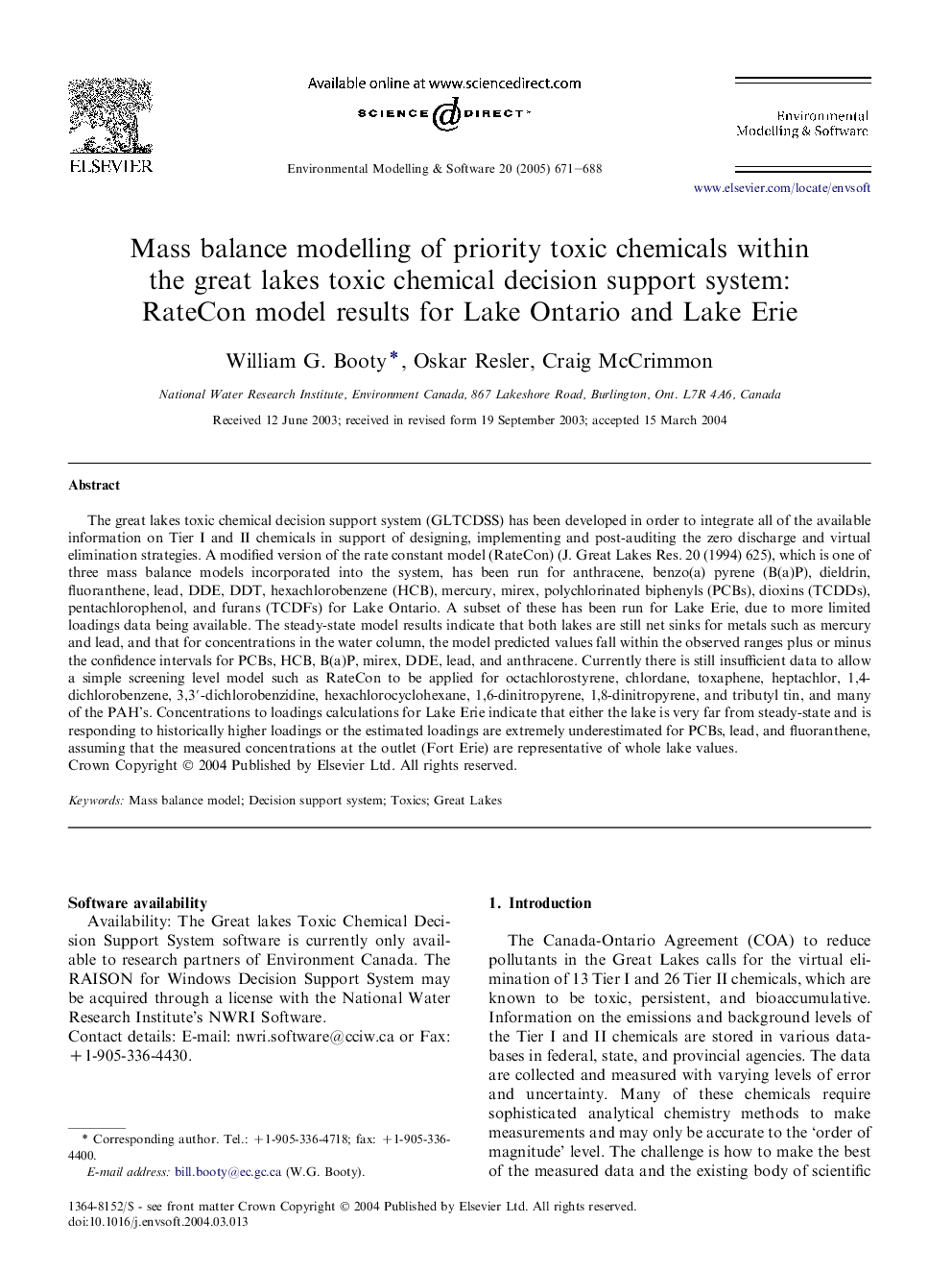| Article ID | Journal | Published Year | Pages | File Type |
|---|---|---|---|---|
| 10370721 | Environmental Modelling & Software | 2005 | 18 Pages |
Abstract
The great lakes toxic chemical decision support system (GLTCDSS) has been developed in order to integrate all of the available information on Tier I and II chemicals in support of designing, implementing and post-auditing the zero discharge and virtual elimination strategies. A modified version of the rate constant model (RateCon) (J. Great Lakes Res. 20 (1994) 625), which is one of three mass balance models incorporated into the system, has been run for anthracene, benzo(a) pyrene (B(a)P), dieldrin, fluoranthene, lead, DDE, DDT, hexachlorobenzene (HCB), mercury, mirex, polychlorinated biphenyls (PCBs), dioxins (TCDDs), pentachlorophenol, and furans (TCDFs) for Lake Ontario. A subset of these has been run for Lake Erie, due to more limited loadings data being available. The steady-state model results indicate that both lakes are still net sinks for metals such as mercury and lead, and that for concentrations in the water column, the model predicted values fall within the observed ranges plus or minus the confidence intervals for PCBs, HCB, B(a)P, mirex, DDE, lead, and anthracene. Currently there is still insufficient data to allow a simple screening level model such as RateCon to be applied for octachlorostyrene, chlordane, toxaphene, heptachlor, 1,4-dichlorobenzene, 3,3â²-dichlorobenzidine, hexachlorocyclohexane, 1,6-dinitropyrene, 1,8-dinitropyrene, and tributyl tin, and many of the PAH's. Concentrations to loadings calculations for Lake Erie indicate that either the lake is very far from steady-state and is responding to historically higher loadings or the estimated loadings are extremely underestimated for PCBs, lead, and fluoranthene, assuming that the measured concentrations at the outlet (Fort Erie) are representative of whole lake values.
Related Topics
Physical Sciences and Engineering
Computer Science
Software
Authors
William G. Booty, Oskar Resler, Craig McCrimmon,
